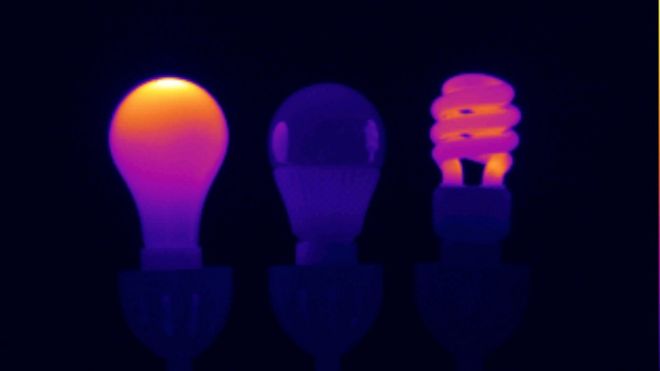
US researchers say they have
developed a technique that can significantly improve the efficiency of
the traditional incandescent light bulb.
These older bulbs have been phased out in many countries because they waste huge amounts of energy as heat.But scientists at MIT have found a way of recycling the waste energy and focusing it back on the filament where it is re-emitted as visible light.
The development has been reported in the journal Nature Nanotechnology.
Little has changed in the technology of the incandescent light bulb since they were commercially developed by Thomas Edison in the US in the 1880s.
They create light by using electricity to heat a thin tungsten wire filament to temperatures of around 2,700C. This causes the filament to glow and produce a broad-spectrum warm white light.
However light bulbs of this type are hugely inefficient - they only convert around 2-3% of the energy they use into light - the rest is wasted as heat.
They have long been a target for green campaigners, concerned about climate change.
Phased out
This has seen the bulbs banned in the European Union, Canada and their manufacture and importation has been phased out in the US.They've been replaced by more expensive compact fluorescent (CFL) and LED bulbs which are significantly more efficient at around 13%.
Now researchers at MIT believe they have developed a technique that could turn the weakness of the traditional incandescent bulb into a strength.
Using nanotechnology, they've built a structure that surrounds the filament of the bulb and captures the leaking infrared radiation, reflecting it back to the filament where it is re-absorbed and then re-emitted as visible light.
READ MORE: http://www.bbc.com/news/science-environment-35284112
No comments:
Post a Comment